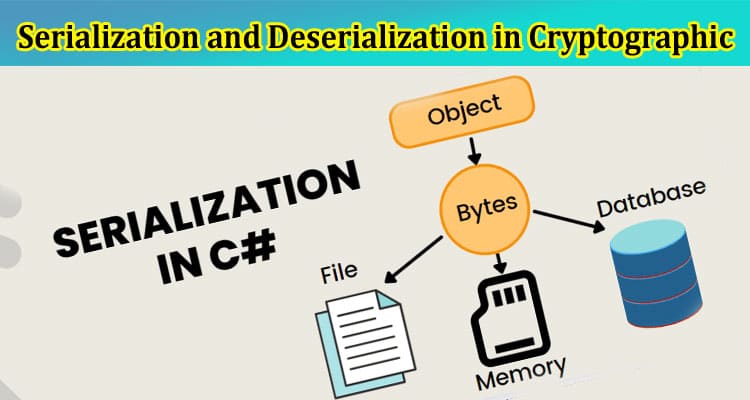In the modern era where technology is at the forefront, the increasing use of cloud computing underscores the necessity for robust and reliable cloud security measures. Although cloud computing offers evident advantages such as scalability and cost-effectiveness, it also brings unique challenges in terms of data protection, access management, and compliance. This article aims to provide an in-depth examination of the complexities of cloud security, including the potential risks involved, key components, best-practice suggestions, and advanced technologies that enable organizations to effectively safeguard their data in the cloud. While exploring further information on safeguarding digital assets in the cloud, visiting geekpedia.com can be beneficial. This resource offers valuable guidance and solutions for maintaining the security of digital environments.
Understanding Cloud Security Risks
Data Breaches in the Cloud
Data breaches are one of the most significant concerns in cloud security. These breaches can result from unauthorized access, weak authentication, or vulnerabilities in cloud infrastructure. Cybercriminals often target sensitive information, such as customer data or intellectual property, putting organizations at risk of reputational damage and legal consequences.
Insider Threats and Data Leaks
Insider threats, whether intentional or accidental, pose a significant risk. Employees with access to cloud resources can misuse their privileges, intentionally leak data, or fall victim to phishing attacks. Detecting and mitigating insider threats is a critical aspect of cloud security.
Compliance and Regulatory Challenges
Meeting compliance requirements is a pressing concern, especially for organizations in highly regulated industries. Cloud service providers must adhere to various standards and certifications, but organizations also have responsibilities to ensure compliance when using cloud services. Failure to do so can result in severe penalties.
Cloud Misconfigurations and Vulnerabilities
Cloud misconfigurations and vulnerabilities can expose organizations to security risks. These issues may arise from improper access controls, misconfigured security groups, or unpatched software. Cybercriminals actively scan for such weaknesses, making it essential for organizations to regularly assess and address these vulnerabilities.
Key Components of Cloud Security
Identity and Access Management (IAM)
IAM is a cornerstone of cloud security, enabling organizations to manage user access and permissions effectively. Role-Based Access Control (RBAC) ensures that users only have access to the resources necessary for their roles, reducing the risk of unauthorized access. Multi-Factor Authentication (MFA) adds an extra layer of security by requiring multiple forms of verification.
Encryption in the Cloud
Encryption plays a vital role in protecting data both at rest and in transit. Data encryption ensures that even if unauthorized access occurs, the data remains unreadable. It is essential to implement data encryption and ensure proper key management.
Security Information and Event Management (SIEM)
SIEM solutions provide real-time monitoring and analysis of security events in the cloud. They help organizations detect anomalies and potential threats, allowing for swift response and mitigation.
Cloud Security Posture Management (CSPM)
Cloud Security Posture Management (CSPM) solutions play a vital role in the ongoing monitoring of cloud configurations and ensuring adherence to security best practices. These solutions offer visibility into cloud environments, detect misconfigurations, and assist organizations in upholding a secure posture.
Threat Intelligence and Detection
Leveraging threat intelligence feeds and advanced detection techniques like behavioral analytics can help organizations stay ahead of cyber threats. Identifying unusual patterns of behavior or known attack vectors can mitigate risks effectively.
Best Practices for Cloud Security
Implementing a Zero Trust Framework
A Zero Trust framework assumes that threats may exist both outside and inside the network. Implementing least privilege access and continuous monitoring can help organizations adopt a Zero Trust approach, minimizing potential attack surfaces.
Regular Security Audits and Assessments
Regular security audits and assessments are crucial for identifying vulnerabilities and misconfigurations. These assessments should include penetration testing, vulnerability scanning, and compliance checks.
Employee Training and Security Awareness
Investing in employee training and creating a culture of security awareness can reduce the likelihood of insider threats and improve overall security posture. Employees should be educated about phishing attacks, social engineering, and best practices for handling sensitive data.
Incident Response and Recovery Plans
Having a well-defined incident response plan is essential to minimize the impact of security incidents. Organizations should establish clear procedures for identifying, containing, and recovering from security breaches. Regularly testing these plans ensures they are effective when needed.
Cloud Security in Multi-Cloud and Hybrid Environments
Challenges in Managing Multiple Cloud Providers
Organizations often use multiple cloud providers or maintain hybrid environments, which can complicate security management. Each provider may have unique security features and requirements, necessitating a comprehensive approach to security.
Strategies for Consistent Security Across Environments
To maintain consistent security in multi-cloud and hybrid environments, organizations can adopt a unified security strategy. This may involve using security orchestration and automation to streamline security policies and practices across systems.
Hybrid Cloud Security Considerations
Hybrid cloud environments combine on-premises infrastructure with cloud resources. Ensuring seamless and secure data flow between these environments requires robust security measures and data encryption.
Emerging Technologies in Cloud Security
Container Security
Containers are increasingly popular for deploying applications in the cloud. Implementing container security measures, such as image scanning and runtime protection, is vital to prevent vulnerabilities and exploits.
Serverless Security
Serverless computing offers a convenient way to run code without managing servers. However, it introduces new security challenges, including securing serverless functions, access controls, and monitoring.
Cloud-Native Security Solutions
Cloud-native security solutions are specifically designed for cloud environments. These solutions provide granular control and visibility, making it easier to protect cloud-native applications and services.
Future Trends and Outlook in Cloud Security
AI and Machine Learning for Threat Detection
AI and machine learning are poised to play a significant role in cloud security. These technologies can analyze vast amounts of data to detect patterns and anomalies, enabling proactive threat detection and response.
The Role of DevSecOps in Cloud Security
DevSecOps integrates security into the software development process from the beginning. This approach ensures that security is not an afterthought but an integral part of application development, reducing vulnerabilities.
Evolving Regulatory Landscape
As regulations continue to evolve, organizations must stay updated and adapt their cloud security practices accordingly. Understanding the regulatory landscape in various regions is essential for compliance.
Conclusion
In summary, cloud security remains an ever-evolving discipline, demanding continuous adaptation to the changing landscape of threats and technologies. Vigilance is paramount, with organizations needing to stay abreast of the latest security trends and consistently enhance their protective measures. Moreover, considering collaboration with trusted experts in cloud security is essential, as they can provide specialized solutions and guidance to fortify the security of cloud environments. Safeguarding data in the cloud is a multifaceted challenge, but with the right strategies and practices, organizations can ensure the safety of their assets in this complex ecosystem.








